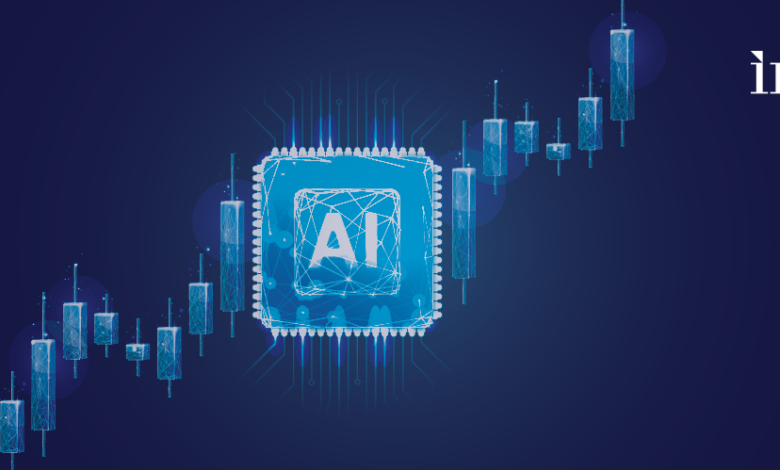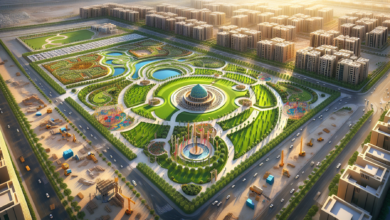
From microprocessors to AI: How 50 years of digital innovation are shaping FDI trends?
The foundation of today’s digital economy was laid over 50 years ago, with the invention of the microprocessor in 1971—a revolutionary breakthrough that placed the power of computing onto a single chip. This innovation paved the way for the development of personal computers, the internet, smartphones and cloud computing, each milestone contributing to the technological landscape evolution. While modern advancements, like Artificial Intelligence (AI) and the Internet of Things (IoT), are often credited with driving today’s transformation, the reality is that this evolution has been steadily unfolding for decades, continuously reshaping our social and economic development.
From a foreign direct investment (FDI) perspective, the rise of the digital economy has been nothing short of transformative. Nations worldwide are investing heavily in the digital economy, now accounting for 15% of global GDP, according to the World Bank and totalling $15.2 trillion in 2022. This significant surge, expanding 2.5 times faster than the broader economy, has driven FDI flows into digital sectors from $520 billion in 2010 to $653 billion in 2022, according to an Invest Qatar report on digital FDI. Forrester projects the global digital economy to grow from $11.8 trillion in 2023 to $16.5 trillion in 2028, driven largely by sectors like online retail and travel and spearheaded by major markets such as the U.S. and China.
As digital technologies, particularly AI and cloud computing, continue to gain widespread adoption, key questions arise: how are the technologies redefining FDI flows and how are nations positioning themselves to stand out in this increasingly competitive landscape?
AI: A catalyst for digital FDI growth
The launch of OpenAI’s ChatGPT in late 2022 sparked widespread excitement, quickly making generative AI a central focus for investors, policymakers and the public. While the concept of AI dates back to the 1950s, its significant advancements in recent years have been driven by the availability of vast data, improved algorithms and more powerful computing hardware.
Today, AI stands as one of the most prominent technology investment trends, with no signs of losing momentum. According to GlobalData, the AI market is estimated to reach $909 billion by 2030, with generative AI being a key growth area. This surge is evidenced by a recent Crunchbase report, which indicates that investments in AI startups soared to $24 billion in Q2 2024, more than doubling from the previous quarter. It also reflects the growing appetite for AI as a transformative technology across various sectors. Notable examples include AI-powered applications in healthcare, where AI is enhancing diagnostics and treatment plans and in manufacturing, where it is optimising production processes and supply chain management.
Bringing opportunities, yet widening economic gap
As opportunities in AI continue to grow and accelerate the digital economy boom, a widening gap is emerging between countries, driven by varying strategies and responses to AI adoption. Leaders in AI—primarily developed nations—are poised to extend their lead over developing countries, which are lacking the infrastructure or skilled workforces needed to harness AI’s benefits. This trend is underscored by the dominance of the U.S., Denmark and Singapore, which top the IMF’s AI Preparedness Index, a benchmark that tracks 174 economies based on their readiness across four areas: digital infrastructure, human capital and labour market policies, innovation and economic integration, and regulation.
With concerns rising about growing inequality between countries, there is a pressing need for global collaboration to strengthen regulations, invest in digital infrastructure, foster digital skills and mitigate potential risks. This is the key focus of GITEX 2024, one of the world’s iconic large-scale tech exhibitions. This year’s theme, “Global collaboration to forge a future AI economy,” highlights the urgency and potential of uniting global efforts to shape a more connected, innovative and intelligent economic landscape. The exhibition also sheds light on the rise of AI and associated opportunities across various regions, with a particular emphasis on the Middle East and the Gulf Cooperation Council (GCC).
Digital FDI opportunities and AI advancements in GCC
Acknowledging the vast potential of the digital economy, many GCC members have launched ambitious AI and digitalisation strategies. In Qatar, digital transformation is a cornerstone of its economic growth strategy, aligning with the broader regional drive. Under the newly launched Digital Agenda 2030, the nation aims to add $40 billion to non-hydrocarbon GDP and create 26,000 new ICT jobs by 2030. This commitment is reflected in significant investments, with annual ICT spending expected to reach $6.2 billion by 2026, growing at a Compound Annual Growth Rate (CAGR) of 9.2%. Major projects, such as Google’s Cloud Region, Microsoft’s data centre and Lusail Smart City, are testament to Qatar’s appeal as an attractive tech hub for foreign investors.
Other regional initiatives include the launch of AI-focused accelerators and incubators and the development of national AI strategies.

Looking forward
In the spirit of GITEX 2024’s theme, we must continue to work together to forge a future AI economy that is innovative, inclusive and sustainable. Through strategic investments, robust policies and a collaborative approach, we can unlock the full potential of the digital economy and create a future that benefits all.





